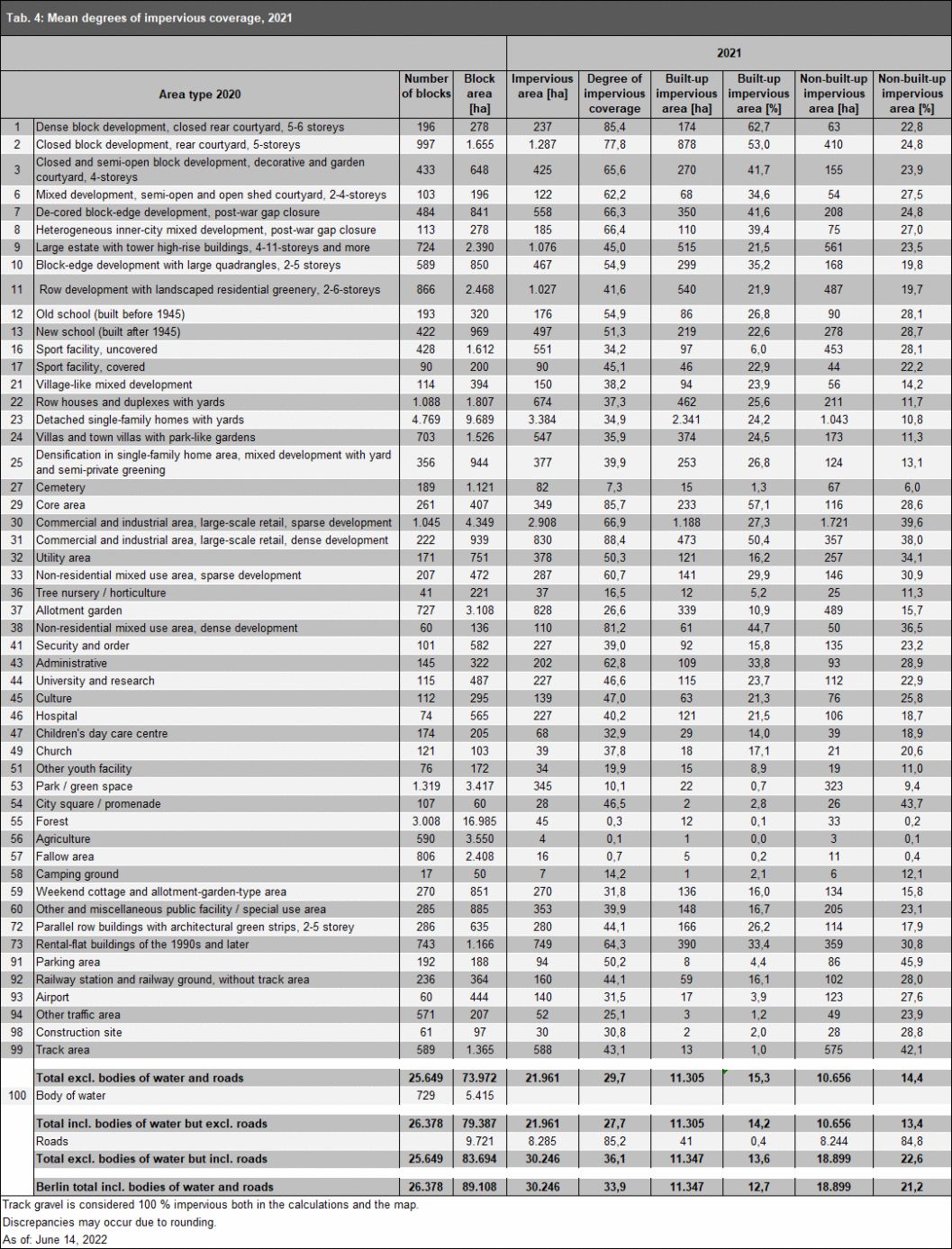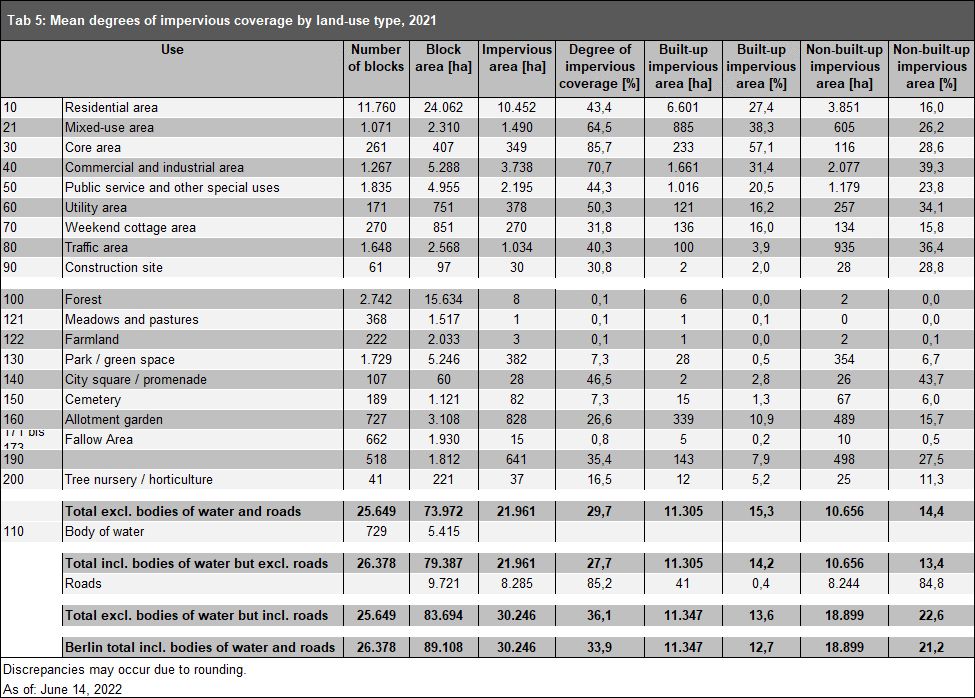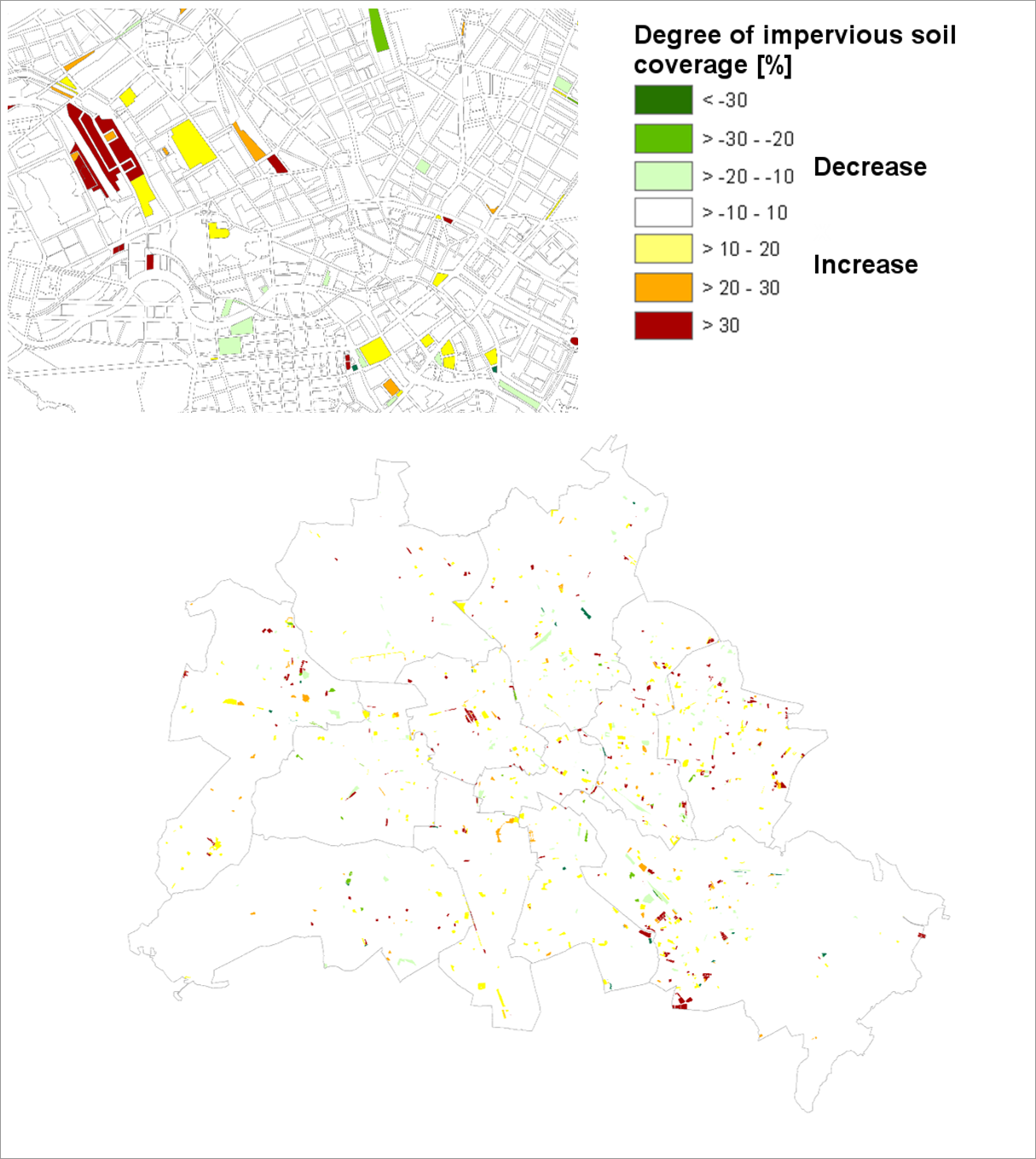The map presents the degree of impervious coverage, i.e. the covering of the earth’s surface with impermeable materials, as a percentage of the reference area (block (segment) area or road section). Generally, the degree of impervious coverage, especially that of block (segment) areas, decreases from the city centre toward the outskirts, as the building structure becomes less dense, and the areas on the periphery are either completely undeveloped (forest or farmland), or characterised by single-family homes. Exceptions to this are traditional borough centres, such as those of Spandau and Köpenick, which were separate cities prior to 1920. Their degree of impervious coverage is about 60 % in general, and higher than 90 % in their core areas. Extensive areas occupied by large estates on the outskirts, such as Marzahn, Hellersdorf and Hohenschönhausen, or Gropiusstadt in Neukölln and the __Thermometersiedlung__ (“Thermometer Estate”) in Lichterfelde, are between 50 % and more than 80 % impervious. Commercial areas on the outskirts of the city, such as at Goerzallee in Steglitz or at Landsberger Straße in Mahlsdorf, also stand out due to a high degree of impervious coverage of more than 70 %. Table 4 presents the average degrees of impervious coverage of 2021 by area type in the following.
The area types “Dense block development, closed rear courtyard, 5-6 storeys” with 85.4 %, “Core area” with 85.7 % and “Commercial and industrial area, large-scale retail, dense development” display the highest overall degrees of impervious coverage at 88.4 %. The lowest degrees of impervious coverage, at below 1 % each, are listed for the area types “Forest”, “Agriculture” and “Fallow area”. A sharp increase in the degree of impervious coverage can be observed for the area type “Rental-flat buildings of the 1990s and later”. In recent years, new building projects were completed in many of these blocks (e.g. in __Europacity__, north of the __Hauptbahnhof__ (Berlin Central Station) or the __Rummelsburger Bucht__ (bay along river Spree)).



